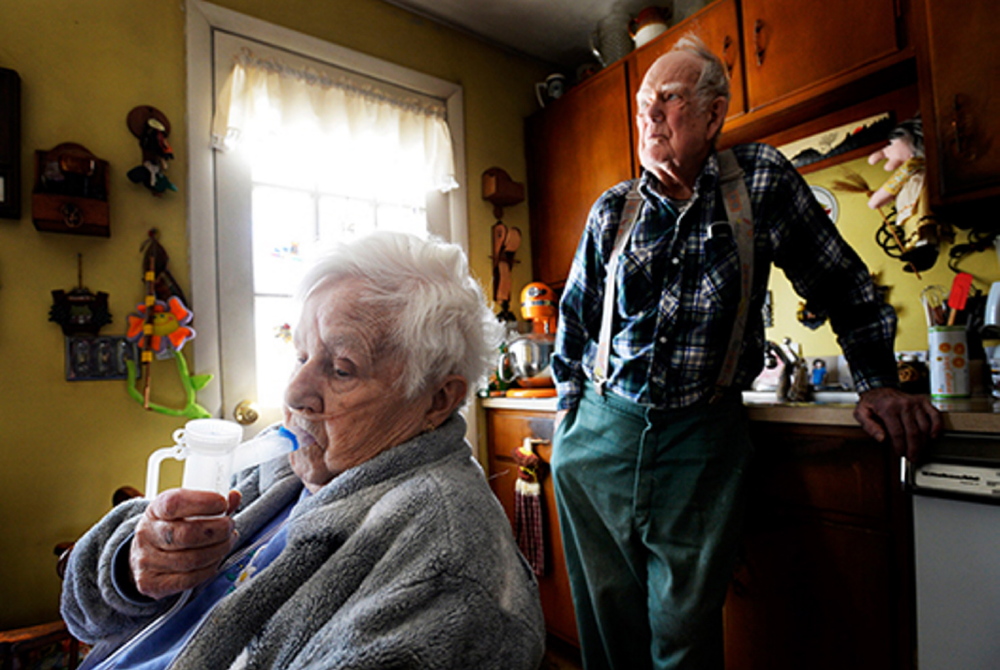An 80-year-old Brewer man with a history of heart disease and a recent stroke must be rushed to the emergency room so often his wife lays out clothes every night before bed, just in case. An 85-year-old woman from Cape Elizabeth who hasn’t seen her primary care physician in five years suffers a sudden, life-threatening illness, and spends much of the next year and a half in hospitals and rehab facilities.
These two real-life situations are echoed throughout Maine, where an old and rapidly aging population too often gets care when it is most costly and disruptive.
There is hope, however. Maine is on the forefront of the effort to change the way health care is delivered and providers are paid. It is aimed at keeping patients engaged in their own care, and out of hospitals.
But a major part of this effort, a federal initiative of which Maine is one of seven pilot states, ends this year. The initiative is just finding its way, but this new philosophy is the best chance for improving care and reducing costs. It should be given more time.
For that to happen, it will take the continued support of the federal government and private insurers.
Most of all, health care providers comfortable under the traditional fee-for-service model have to change the way they operate, so that care becomes more about keeping patients healthy than dealing with them when they are sick.
PILOT PROGRAM
The federal initiative is known as the Multi-Payer Advanced Primary Care Practice demonstration. The three-year pilot program allows qualifying primary care practices in the selected pilot states to receive a per patient, per month fee from Medicare, Medicaid and private health insurers.
The practices then create “patient-centered medical homes,” or teams of health-care providers that oversee every aspect of mental and physical health.
Community care teams also are assembled, to work with patients who need extra support.
The goal is to manage patients, coordinating medications and appointments, conducting the right tests and handling matters before they get too serious. Ultimately, that cuts down on unnecessary procedures, inpatient admissions and emergency department visits.
“You can’t keep paying for every CAT scan that’s ordered, or every MRI or every ED visit,” said Dr. Lisa Letourneau, executive director of Maine Quality Counts, a health care collaborative involved in the pilot program. “You have to invest meaningfully.”
Maine launched its own medical home pilot in 2010, and it was on the strength of that effort that the state was chosen for the federal program, which began in mid-2011.
SHOWING PROMISE
The pilot in Maine has grown from the initial 26 primary care practices to 160 today, covering about 600,000 residents.
To really affect health care spending, the patient-centered philosophy has to reach more patients, both here and across the country. But the progress so far is promising.
A lot of attention has been paid to a study released recently by the Journal of the American Medical Association, which showed a medical home program in Pennsylvania had little impact on health costs and outcomes.
At the time of the study, however, the Pennsylvania program had little experience, and a lot has been learned in the last couple of years. According to one analysis, the program did not properly align its cost-control and health incentives properly, and did not target the chronically ill patients that so burden the system.
A more recent, though less in-depth, study covered 20 programs over the last 17 months. It showed significant improvements in ER visits and hospital admissions, as well as smaller gains in other areas, such as readmissions and use of preventative services.
Maine providers are reporting success as well.
DFD Russell Medical Centers in Leeds, Monmouth and Turner has since 2009 used its community care teams to target its highest utilizers of services. According to Laurie Kane-Lewis, chief executive officer, supporting that population has led to a 50 percent reduction in emergency department use and 30 percent decrease in rehospitalization.
And what about the two Mainers mentioned at the start?
The Brewer man, Harry Estes, now receives help through a community care team from Eastern Maine Healthcare Systems. A year after his stroke, he is home and active, according to a report from the Robert Wood Johnson Foundation, which helps fund Maine Quality Counts. The team calls three times a week to check on his condition, and support is available at any time, to help avoid late-night visits to the hospital.
Corinne Murray, the woman from Cape Elizabeth, received regular visits and calls from a nurse after coming home, to organize medications and follow-up care, lessening the chance of a return trip. She now gets occasional home visits from a doctor.
It’s the kind of care everyone deserves, for a cost we can all better afford.
Send questions/comments to the editors.



Success. Please wait for the page to reload. If the page does not reload within 5 seconds, please refresh the page.
Enter your email and password to access comments.
Hi, to comment on stories you must . This profile is in addition to your subscription and website login.
Already have a commenting profile? .
Invalid username/password.
Please check your email to confirm and complete your registration.
Only subscribers are eligible to post comments. Please subscribe or login first for digital access. Here’s why.
Use the form below to reset your password. When you've submitted your account email, we will send an email with a reset code.